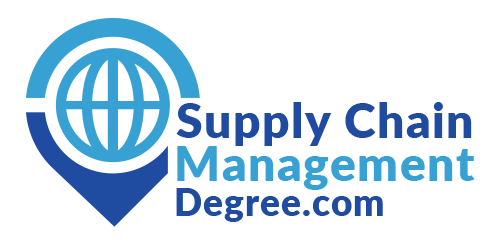
Inventory Management Best Practices: Balancing Cost and Service Levels
Effective inventory management is crucial for businesses striving to balance cost control with high service levels. Poor inventory management can lead to excessive carrying costs, stockouts, and dissatisfied customers. To avoid these pitfalls, businesses must implement best practices that optimize inventory levels and enhance overall efficiency. Here, we discuss key strategies for balancing cost and service levels in inventory management.
Accurate Demand Forecasting
Accurate demand forecasting is the cornerstone of effective inventory management. It involves predicting future demand for products based on historical data, market trends, and seasonality. By understanding demand patterns, businesses can better plan their inventory levels, reducing the risk of overstocking or stockouts.
- Utilize Advanced Analytics: Leverage data analytics tools and software to analyze historical sales data and identify trends. Machine learning algorithms can further enhance forecasting accuracy by considering multiple variables and their interactions.
- Collaborate with Sales and Marketing: Engage with sales and marketing teams to gain insights into upcoming promotions, product launches, and market shifts. This collaboration ensures that inventory planning aligns with business activities and market conditions.
- Monitor Market Conditions: Stay informed about market trends, economic indicators, and competitor activities. These external factors can influence demand and should be incorporated into forecasting models.
Just-in-Time (JIT) Inventory
Just-in-Time (JIT) inventory management aims to minimize inventory levels by receiving goods only when they are needed for production or sales. This approach reduces carrying costs and minimizes waste but requires precise coordination with suppliers and reliable demand forecasts.
- Strengthen Supplier Relationships: Develop strong relationships with reliable suppliers who can deliver goods quickly and accurately. Regular communication and collaboration with suppliers ensure timely deliveries and flexibility in response to demand fluctuations.
- Implement Efficient Reordering Systems: Use automated reordering systems to trigger orders based on real-time inventory levels. These systems help maintain optimal inventory levels and reduce the risk of stockouts or excess inventory.
- Streamline Operations: Optimize internal processes to ensure quick turnaround times for receiving, processing, and delivering inventory. Efficient operations are critical to the success of JIT inventory management.
Safety Stock Optimization
Safety stock acts as a buffer against uncertainties in demand and supply. While holding safety stock can prevent stockouts, it also ties up capital and increases carrying costs. Optimizing safety stock levels is essential for balancing cost and service levels.
- Calculate Safety Stock Accurately: Use statistical methods to determine the appropriate safety stock levels based on demand variability, lead times, and desired service levels. Common methods include the standard deviation of demand during lead time and the desired service level multiplier.
- Regularly Review Safety Stock Levels: Periodically review and adjust safety stock levels based on changes in demand patterns, supplier reliability, and market conditions. Regular reviews ensure that safety stock remains aligned with current business needs.
- Segment Inventory: Categorize inventory based on demand variability, lead times, and criticality. Apply different safety stock strategies for different segments, focusing more on high-value or critical items.
Inventory Turnover Ratio
The inventory turnover ratio measures how often inventory is sold and replaced over a period. A high turnover ratio indicates efficient inventory management, while a low ratio suggests overstocking or slow-moving inventory.
- Monitor and Analyze Turnover Ratios: Regularly monitor inventory turnover ratios for different products and categories. Analyze the reasons behind low turnover ratios and take corrective actions to improve them.
- Reduce Slow-Moving Inventory: Identify and address slow-moving inventory through markdowns, promotions, or returns to suppliers. Reducing slow-moving items frees up capital and storage space for faster-moving products.
- Optimize Product Mix: Continuously evaluate the product mix to ensure alignment with customer demand and market trends. Adjusting the product mix based on sales performance and customer preferences enhances inventory turnover and profitability.
Lean Inventory Management
Lean inventory management focuses on eliminating waste and improving efficiency throughout the supply chain. This approach aims to streamline operations, reduce costs, and enhance service levels.
- Implement Continuous Improvement: Adopt a culture of continuous improvement (Kaizen) to identify and eliminate inefficiencies in inventory management processes. Regularly review and refine processes to enhance performance.
- Enhance Process Visibility: Use technology such as inventory management software and RFID to gain real-time visibility into inventory levels and movements. Enhanced visibility helps in making informed decisions and reducing waste.
- Integrate Supply Chain Functions: Foster collaboration and integration across supply chain functions, including procurement, production, and distribution. Integrated operations improve coordination and efficiency, reducing lead times and inventory levels.
Balancing cost and service levels in inventory management requires a strategic approach that incorporates accurate demand forecasting, JIT inventory, safety stock optimization, high inventory turnover ratios, and lean management principles. By implementing these best practices, businesses can optimize inventory levels, reduce costs, and enhance customer satisfaction. Effective inventory management not only improves operational efficiency but also contributes to the overall success and competitiveness of the business.


